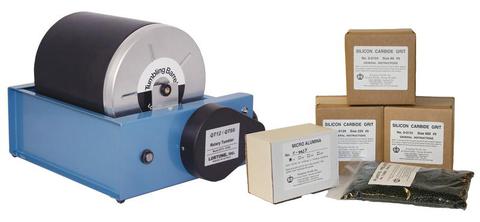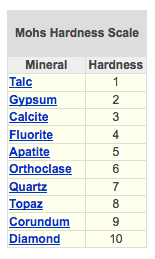Sunday, November 24 2019
A rotary rock tumbler is the most popular and least expensive type on the market today. It has a system of durable rubber barrels that rotate around a metal cylinder to tumble and polish the rocks inside. They are easy to use and create smooth, polished stones in 4-6 weeks. Finished rocks will have a rounded shape regardless of what they looked like when you started. Some models have multiple barrels so you can tumble two different types of rock, or process two batches at different stages of the tumbling process. The opposite type is called a vibrating rock tumbler.
Tuesday, August 13 2019
The type of stones you use for rock tumbling is largely personal preference. But whether you collect Any rock with a hardness of 5-7 on the Mohs hardness scale will generally take a nice polish in a rock tumbler. Agates have a hardness of 7. Harder rocks usually result in a high-gloss finish. Softer rocks will get smooth and rounded, but they won't take a polish. If the rock looks earthy, it will generally still look earthy when you take it out of the tumbler. Mohs Hardness Scale is named after its inventor, Friedrich Mohs, a German mineralogist. The scale was developed in 1812. He selected 10 mineral To start, fill the rock tumbler barrel between 2/3 and 3/4 full. Choose rocks of varying sizes, as this will promote thorough tumbling action. A batch of rocks that are all about the same size will often not tumble properly or grind very slowly. For a 3 pound barrel, a good range of sizes is from .25 inch to 1.5 inches. Lortone Rock Tumblers found here. If you don't happen to live where agates can be found in stream beds or where quartz pebbles can be found along beaches, that's OK. You can still enjoy tumbling rocks by purchasing the rough materials online. Although it's fun to collect your own rocks, it is often much more economical to purchase them. And remember that collecting on private property without permission is unlawful and that removing rocks from parks and most other types of public land is also illegal. Rocks NOT to Tumble It's just as important to know what type of rocks you should NOT tumble, as it is to know which ones with produce nice round and shiny gemstones. Sedimentary rocks such as sandstone, coal, limestone and shale are too soft or poorly cemented to polish into shiny gems. Metamorphic rocks that contain micas or have a "grainy" texture are also unsuitable - they will break up instead of becoming smooth. And, most igneous rocks do not tumble well because they contain several different minerals that wear down at very different rates. Nugget of News Blog Tuesday, December 01 2015
With the weather turning colder, you might think you're done prospecting 'til next summer, but you don't have to be! Even if you're not a regular snowbird heading to a warmer climate for the next few months, Gold mining in the desert is especially enjoyable if you're not into crowds— the desert can be delightfully smog free and people free in the winter. Experts say there is just as much gold waiting to be taken out of the desert as there is commonly found in streams and rivers. Why? Well, throughout history the desert mines just never got the publicity that wet places like California's Mother Lode did, so fewer prospectors went there. Plus, back in the day, mining used to be harder in dry conditions. Luckily that's no longer true if you have the right equipment.
• Metal detecting is another great way to hunt for gold in the desert. Gold detectors are not necessarily higher in cost, but they are built with a higher sensitivity to detecting gold nuggets, and have better ground balancing and • A bonus of prospecting in the desert is the abundance of interesting rocks. You can find many unusual rocks and semi-precious gems such as tourmaline, turquoise, agate, jasper, and more. Lapidary shops can cut and polish the rocks for you, or buy your own rock tumbler and lapidary tools and learn a new hobby. This winter, consider extending your gold-getting season with a prospecting trip to a sunnier, warmer state. Good luck and have fun! |
|
Nugget of News Blog |







 them on your own or buy rough stones, for best results stick to stones of similar hardness but of various sizes when tumbling together. This will ensure they all take approximately the same amount of time to reach the proper smoothness, and that harder stones don't damage softer stones during the tumbling process.
them on your own or buy rough stones, for best results stick to stones of similar hardness but of various sizes when tumbling together. This will ensure they all take approximately the same amount of time to reach the proper smoothness, and that harder stones don't damage softer stones during the tumbling process.  s of distinctly different hardness (hardness is the resistance of a material to being scratched) that ranged from a very soft mineral (talc) to a very hard mineral (diamond). Since you always want to tumble together stones of similar hardness for best results, it's important to understand this principle.
s of distinctly different hardness (hardness is the resistance of a material to being scratched) that ranged from a very soft mineral (talc) to a very hard mineral (diamond). Since you always want to tumble together stones of similar hardness for best results, it's important to understand this principle.